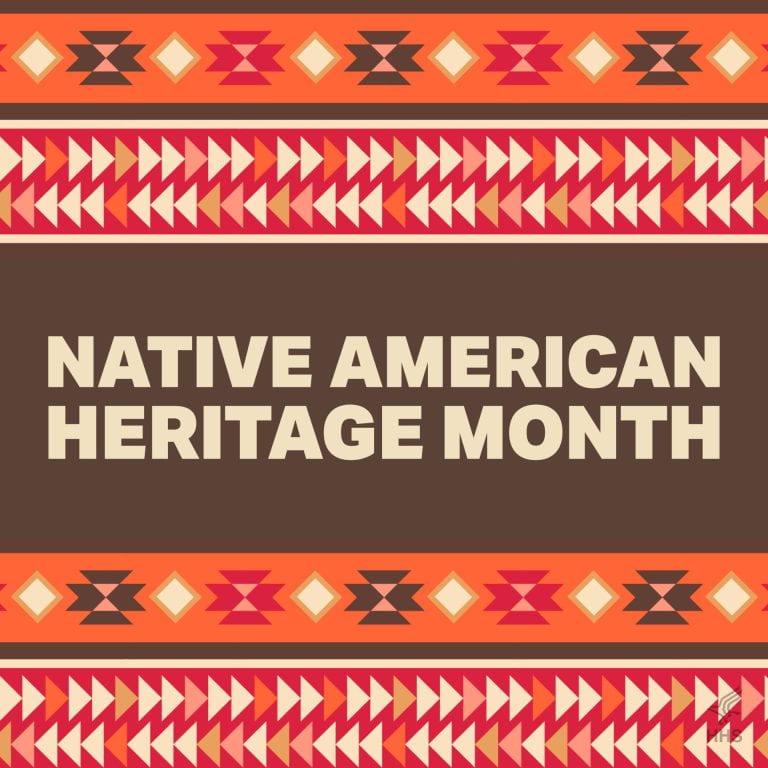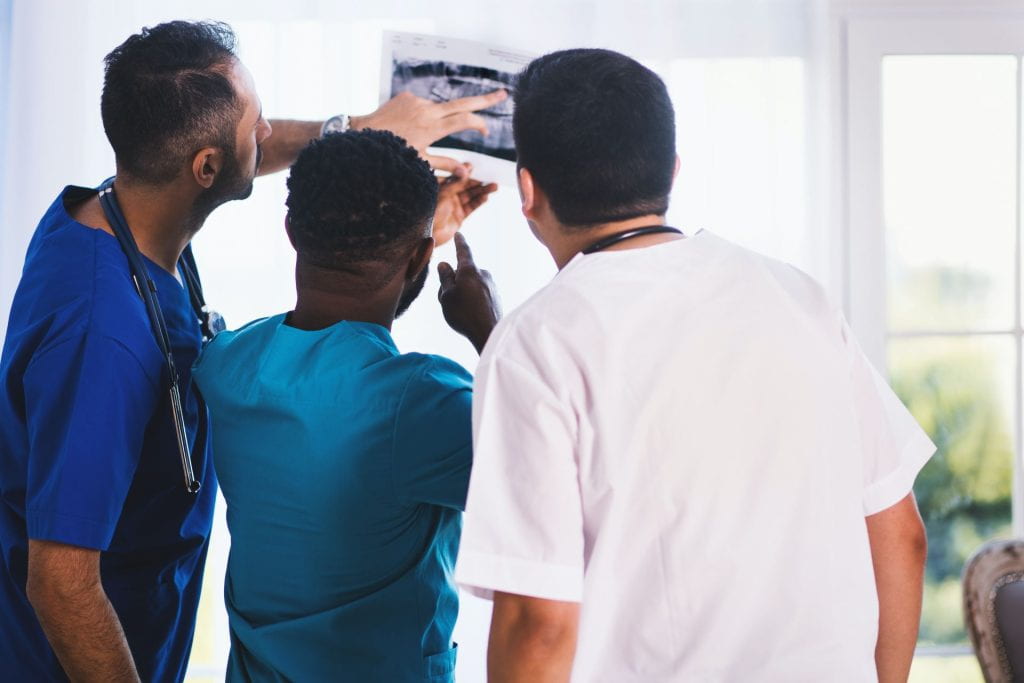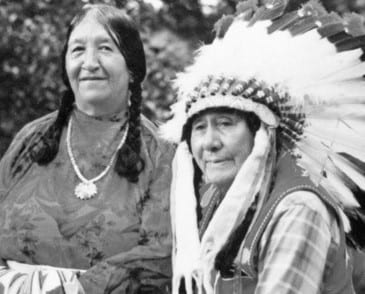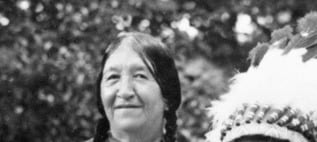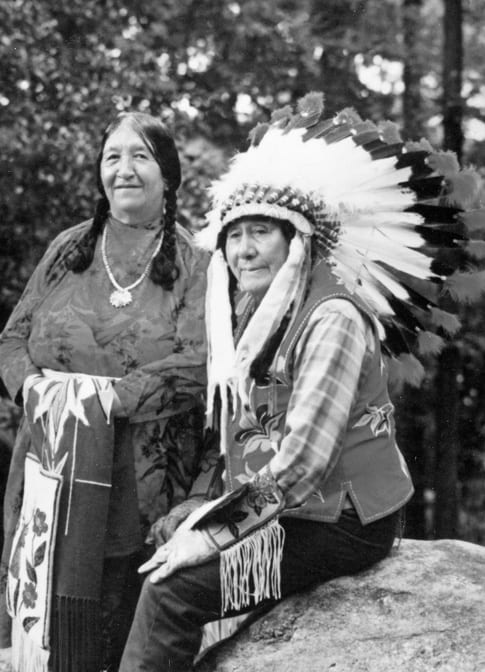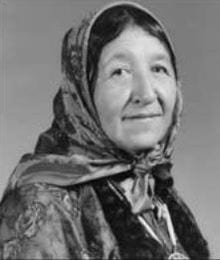
November is Native American Heritage Month. To observe it, The Rotation spoke with Dr. Emily A. Haozous, PhD, RN, FAAN (Chiricahua Fort Sill Apache).
Dr. Haozous is a nurse and research scientist with the Pacific Institute for Research and Evaluation - Southwest Center, based in Albuquerque, New Mexico. Dr. Haozous conducts community-based and community-guided research and evaluation in collaboration with Native American partners, including urban tribal centers, reservation-based tribal organizations, and tribal governments. Her work is focused on issues of access to care, health equity, cancer and non-cancer pain management, cultural tailoring, and national trends in premature mortality. Dr. Haozous has a clinical background in oncology, hospice, and palliative care nursing. She is a breast cancer survivor and has co-facilitated a women’s cancer support group continuously since 2007. Dr. Haozous received her undergraduate degree in music from the University of California, Santa Cruz, and her MSN and PhD in nursing from Yale University. Most recently, she participated in the authorship of the National Academy of Medicine’s special publication, Systems’ Impact on Historically and Currently Marginalized Populations (expected publication date 2025).
Dr. Haozous is first author of the recent publication, “Indigenous knowledge and sugar sweetened beverages: Qualitative adaptations towards chronic disease prevention and intervention.” The focus of this publication is the adaptation for one Indigenous population of an evidence-based curriculum (SIPsmartER) to reduce consumption of sugar-sweetened beverages (SSB). The study reports on the successful adaptation of the curriculum resulting in a curriculum called IndigenousSIPIN, and also provides valuable insights into the practice of cultural tailoring
The Rotation: Thanks for taking time to talk with me today. I wanted to speak about your most recent publication, and discuss some concepts related to research and Native populations that it introduced me to. I noticed quite a few co-authors on this paper.
EH: It was a really big team. We had people from all over the country and different disciplines… The one thing we didn’t have were any MDs. That wasn’t a conscious decision, just how it worked out. People think about medical research, or health research, and they think about doctors. Here we have nutritionists, we have nurses, we have a social worker… We have people from all across the healthcare spectrum.
The Rotation: I was intrigued by the use of the concept of the Good Mind, a concept familiar to Indigenous people from the community that was addressed by this adaptation, in the modification of the SSB curriculum, which also introduced the metaphor of the Clean and Dirty River as a framework for the curriculum. These worked for the specific Indigenous group the intervention was tested on, who were male athletes in the Northeastern U.S. Would these metaphors be understood to all Indigenous people?
EH: What you’re asking me about is Native Science. That’s kind of the core of cultural tailoring. The old mainstream perspective on cultural tailoring of health literature is “Well, let’s just change the color scheme and maybe add some photos. If they speak a different language, we’ll change the language. Or maybe we’ll make the font size bigger.”
The Rotation: Sort of like when someone doesn’t understand English, so the other person just speaks louder?
EH: That’s a good way to think about it. Think about how that feels, if you’ve ever been to another country and people have done that to you… But when we’re talking about actual cultural tailoring, you really want to think about, Who are the people you’re trying to communicate with, How do they think? What’s important to them? What is their culture? And so, when you do that… it stops being about changing the color scheme – well, actually, maybe the color scheme is important. A lot of Native tribes – I’m not going to say all, because that would be disrespectful, [since] there are 574 recognized tribes in this country right now, and that number’s changing all the time, and we’re all different – color is important to us. When I go and spend time with my tribe, I can tell who’s Apache because of the colors they’re wearing. And I can tell who’s Comanche because of the colors they’re wearing. So color’s important.
The Rotation: That’s why I was wondering, when you are culturally tailoring an intervention or instrument, are there terms that transcend differences between the tribes? I’m asking whether the ways that you modified the tool are fundamentally, across the board, things that would be understood, regardless of tribe.
EH: I don’t think I could say that. I’d have to talk to each person and say, “Does this make sense to you?” Until I had talked to someone from every single tribe or community – and even within tribes there’s differences – I’d have to really do a scan to be able to confidently say yes or no.
So getting back to [cultural tailoring] – we have to get to what is meaningful for people. So it’s not just about color and not just about pictures, but what is meaningful for those people.”
The Rotation: I look at many studies that aren’t designed like this. Is this research practice of culturally tailoring instruments or interventions something fairly new?
EH: Yes. The practice of really digging deep into a community and finding out what is meaningful to you. And it is not just using an algorithm, but going in and saying, “Is this color aesthetically pleasing to you? Are there colors that we shouldn’t be using? Are there pictures that we shouldn’t be using?” You know, in some communities you don’t include pictures of people who have passed on. Which is challenging, because – people die. And so you have to be very careful with that. And in other communities they really want that, to celebrate people who have been important to them.
In science, they want algorithms. In dissemination and implementation research, it’s all about, “What works here should be able to work everywhere else.” And that’s just not the case in Native communities. So, I can’t take the Clean and Dirty River model and use it in the Southwest. Because we just don’t have the same accessibility to water. So I can use the same practice of finding a meaningful metaphor and trying to transform it, but I can’t use Clean and Dirty River.

The Rotation: I was curious about the graphic in the article, which depicts the stages of cultural tailoring of evidence-based interventions.
EH: That was just me trying to make something that was usable. Part of it is, we have this whole curriculum for the program that we didn’t want to publish, because we didn’t want it to become mainstream.
The Rotation: You don’t want it to be used like a blunt instrument.
EH: Exactly.
The Rotation: Publication of these findings is intended to demonstrate cultural tailoring in practice, but it is not intended as a product to be posted online or whatever.
EH: If people want to contact my colleagues and see the materials they created, it’s up to them.
The Rotation: Were all the team members Indigenous?
EH: Some people were not. We spent some time with the non-Indigenous team members getting them to understand… Some people were saying, “You’ll never get them to drink water.” Because there’s no precedent in the literature where you could convince people who were basically addicted to drinking SSB to stop drinking sweet things. And so we had to do a lot of teaching within the team to say, Look, a lot of traditional beverages are sweet, they’re just not sugar-sweetened. They’re sweetened with berries, there are teas that you can sweeten. And natural stevia grows in the area where we did this research. And they were like, “They’ll never choose water.” And we were able to prove them wrong.
The Rotation: Part of the work being done here is to dismantle the assumptions people are making.
EH: For one of them, this person had been working in the field for a very long time, and her biggest success was getting people to drink diet sodas. And we were like, maybe we can aim for a different purpose.
The Rotation: How much of your published work has been related to Indigenous people?
EH: I always get called in as the expert on Indigenous research. I’m happy to do that. That’s my mission. I’ve published in a lot of different places, domains, whether it’s large data analysis or qualitative research looking at access to care in different places, whether that’s in Indian Health Service or pain management or telehealth.
The Rotation: Do you have recommendations for those who are new to reading research conducted in Indigenous populations?
EH: The first thing I would suggest is that when people are reading an article, they find articles that are written by Indigenous authors. Usually there’s a disclosure statement if a person [on the team is] Native. You want a team that has Native people on the team. I’m starting to see articles coming from other countries where they’re just slurping up data from American sources, and they don’t have Native authors, and they’re terrible. The American Journal of Public Health is usually very careful about this. You want to make sure that [researchers have] followed data ownership guidelines from the tribes. That is usually included in the disclosure with the article. Usually the top tier journals will follow that, and the peer reviewers will keep track of that. It’s a very small circle, you start to see the same people publishing.
The Rotation: What was your experience working on this project?
EH: It was a great project. I like doing that kind of work, because it really makes me work my Indigenous mind, and I get to work with Native teams, which I really like to do.
The Rotation: How long did the project last, start to finish?
EH: It was a couple years, and it all happened during COVID. We had to do a lot of the interviews online, which was hard. But one of the best parts was talking to these men who really knew a lot about their culture, and a lot about how to encourage young men to drink water, and what was important to them.
The Rotation: I was struck by the quote in the article from a participant in the intervention who suggested that something that would make others in their community pay attention to reducing SSB consumption was the high cost of dental care, and the prospect of having dental problems, as being more persuasive than health issues which would appear farther down the road.
EH: There’s a lot going on there, like the fact that they don’t have access to good dental care. There’s so much more in there that we couldn’t add.
The Rotation: When we think about barriers to access to care, people are primarily thinking about, say, African American communities or urban versus rural communities. I think it is rare for people to perceive there are Native communities all around us confronting the same or similar issues. Thank you so much for taking the time to speak with me today.
For those interested in learning more about Native Science, Dr. Haozous recommends Gregory Cajete’s Native science : natural laws of interdependence (Clear Light Publishers, 2000.) This book is available to borrow from Georgetown University through Himmelfarb’s WRLC consortial borrowing program.
References
Haozous, E., Yeary, K., Maybee, W., Porter, C., Zoellner, J., John, B., Henry, W. A. E., & Haring, R. C. (2024). Indigenous knowledge and sugar sweetened beverages: Qualitative adaptations towards chronic disease prevention and intervention. Explore (New York, N.Y.), 20(6), 103066. Advance online publication. https://doi.org/10.1016/j.explore.2024.103066

